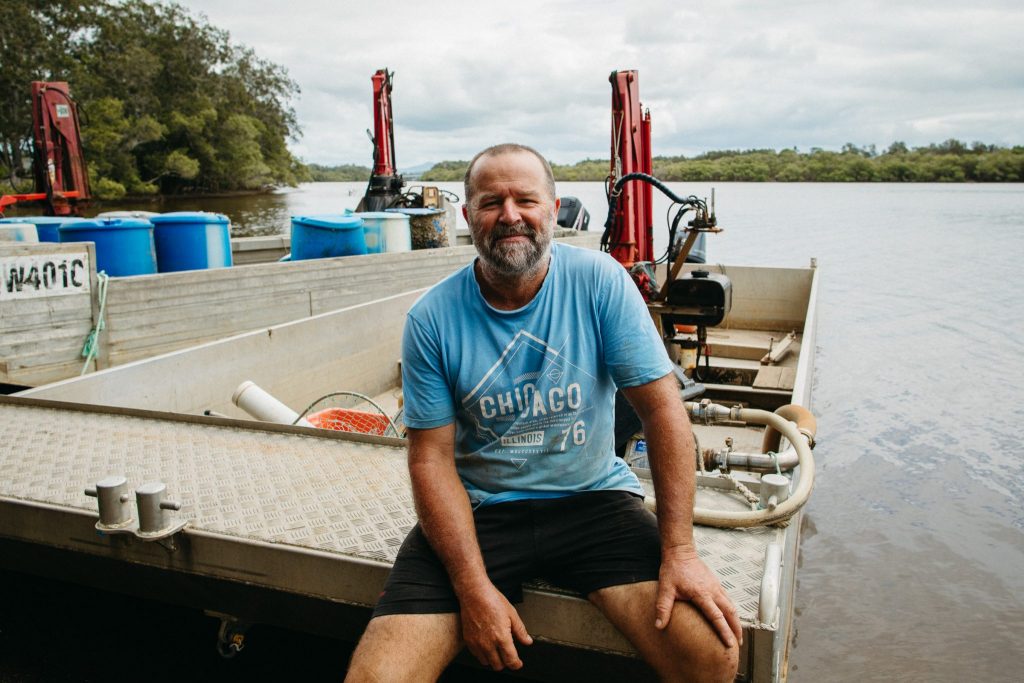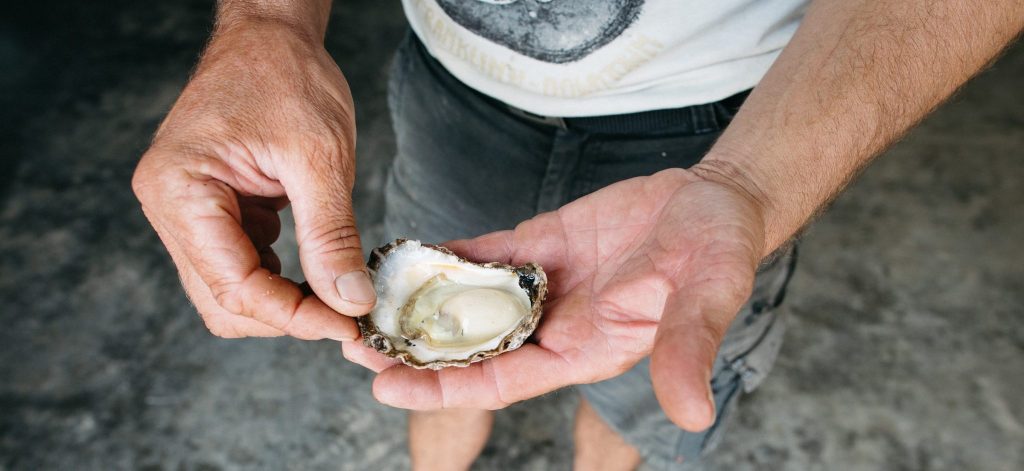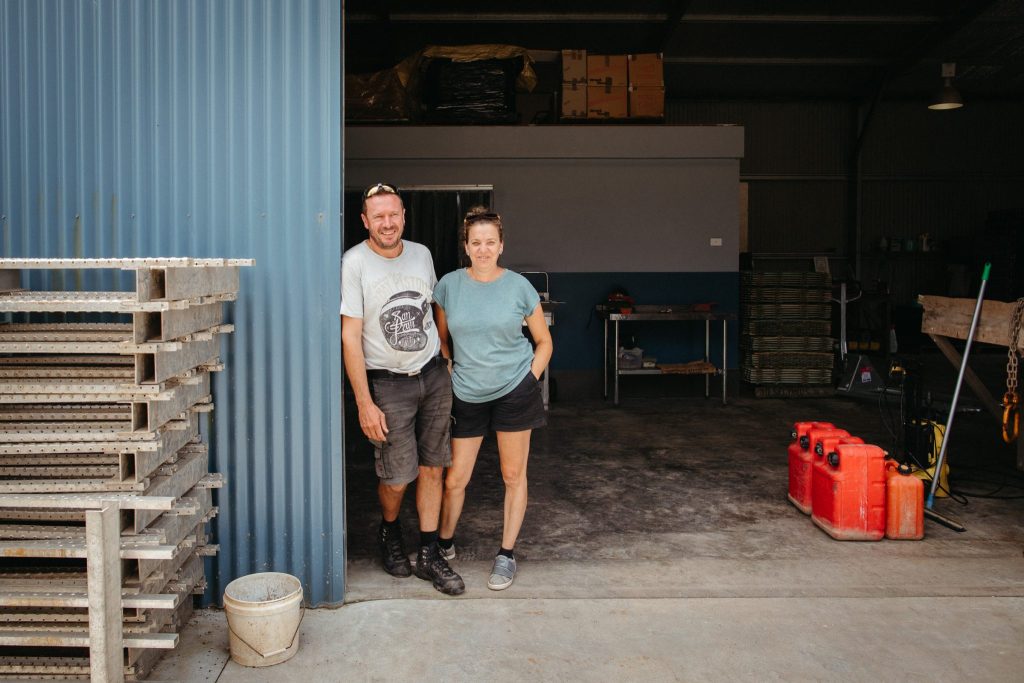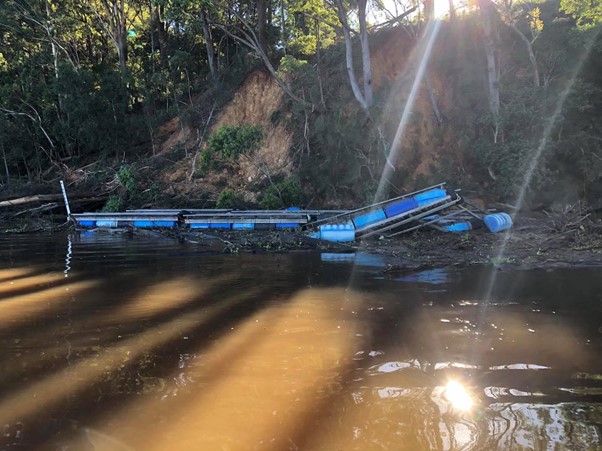Oyster Love
Farmers battle fire and flood. Stock prices rise and tumble. Fortunes are lost overnight. It’s an Australian story writ large across our colonial history. Yet few people realise that the elements plaguing pastoral acreage devastate maritime acreage too, particularly those of the long-suffering farmers of Australia’s prized oyster farms.
Did you know that it takes three years to grow an oyster? Or that oyster babies swim freely and have legs?
Like us, your total oyster knowledge may be limited to where to buy the most luscious dozen for a special meal.
If so, you will also be concerned to learn that our local oyster industry was almost wiped out by fire and flood last year. But like the oyster clings to the rock, the tenacious oyster farmers of the Nambucca River are surviving.
Fire and Rain

James Ford and his family have grown first-rate oysters for two generations. Their success is owed to expert knowledge of what the delicate oyster requires from water temperature, salinity and flow rate, over the three years it takes to grow in the mineral-rich Nambucca River.

‘It’s the minerals that give Nambucca oysters their unique creamy, nutty flavour,’ James tells us. ‘It’s a fine balance.’
This fine balance was completely destroyed by the 2020 bushfires. Black water – water choked by charcoal, ash, debris and fire retardant – polluted the Nambucca River, costing James and his family approximately $160,000 in lost stock. In some areas 90% of their oysters were killed.
With the help of DPI funding the Nambucca oyster industry restarted, only to be devastated by the 2021 floods.
Ten of the rafts James uses to float his oyster racks were lost. Each raft is worth $10,000. That’s $100,000 lost by just one farmer, plus the lost oyster crop. The force of the flood destroyed the rafts and scattered 20 to 30 of the flotation barrels across kilometres of the riverbank. An entire crop of oyster babies was washed to sea. The main shed went 30cms under. Jetties were destroyed.
Now James must finance the clean-up of the debris and rebuilding of rafts and jetties. But how? He has ‘not sold an oyster since November’ and received ‘not one cent’ of government flood-assistance.
We asked how he keeps going.
‘Well,’ James says, smiling, ‘it’s still a great office.’
International Oysters
Nicolas and Delphine Tessier tell the same story. They arrived from France, via Ireland, in 2019. Nicolas is from a traditional oyster farming family. He and Delphine are childhood sweethearts who brought their family’s future to Australia ‘for the weather’.
The irony would crush many less resilient. But like James, Nicolas and Delphine are optimistic, despite losing around $200,000 in stock and infrastructure. They report that the DPI and the EPA have been helpful, but their insurance company less so. They were allowed to claim for storm damage to the tractor, as it was parked outside their open-walled shed. However, they were not allowed to claim for their oyster sorting machine, mere metres from the tractor, because it was inside the shed and therefore classified as flood affected, although the flood came from the very same storm event. Go figure.
‘Each problem has a solution,’ says Nicolas, with a wry smile.
His resilience is due in part to their knowledge of the market and their faith in the quality of their oysters. ‘Here the challenge is growing, not selling. In Europe it is a fight to sell.’

Everyday Resilience
Even under ‘normal’ conditions, the health of an oyster crop can be affected by weather. 30ml of rain within 24 hours, or 70ml over seven days, stops harvest until the farmers test the water, a $1500 cost that takes 24 hours. If they get 7ml of rain while awaiting test results they stay shut and test again.
This is the price of food security.
So next time you savour the unique creamy, nutty flavour of a Nambucca oyster, raise a glass to the farmers who battle flood, fire and famine to grace your table with this iconic treat.
Since meeting James, Delphine, and Nicolas we hear that harvest has resumed. Great news! Why not buy a dozen or two this weekend? Or three.
Read about Gowings Whale Trust’s partnership with the Plastic Collective to clean up our waterways and recycle discarded plastic.




